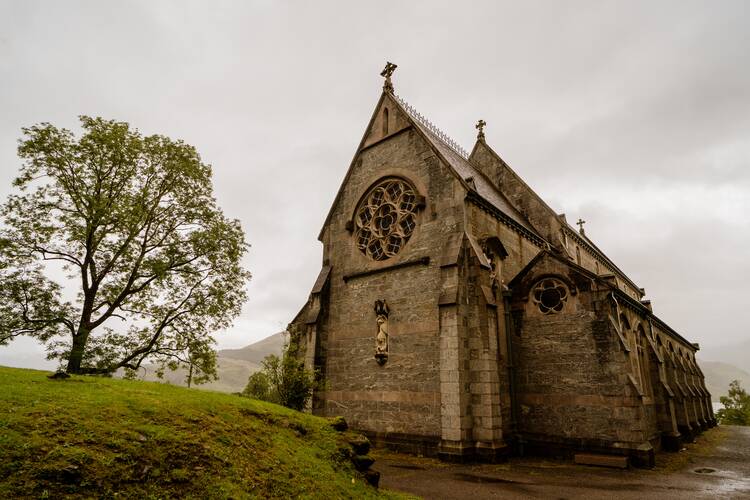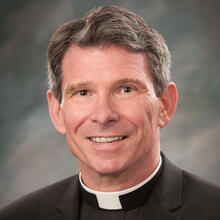A Homily for the Octave Day of Christmas, Solemnity of the Blessed Virgin Mary, Mother of God
Readings: Numbers 6:22-27 Galatians 4:4-7 Luke 2:16-21
The roots of the Scottish Christmas carol “Tàladh ar Slànaigheir,”Gaelic for “The Lullaby of Our Savior” lie too deep in Celtic Christianity to discern its origin, but the carol’s English words were penned in the 19th century by the Rev. Ronald Rankin, a Catholic priest who pastored on the shores of Loch Shiel, just over the sea from Skye. Most people now know it as “The Christ Child’s Lullaby.”
It is not a song about the Virgin and Child. No, the Virgin Mother is singing to her child. In his Christmas Carols: From Village Green to Church Choir (2015), Andrew Gant shares a Celtic legend associated with the song:
There was once a shiftless laddie in one of the isles who had lost his mother, and that is always a sad tale, but had got a stepmother in her place, and that is sometimes a sadder tale still.... “Son of another,” said his stepmother in a heat of anger, “there will be no luck in this house till you leave, but whoever heard of a luckless chick leaving of its own will?” But leave the shiftless laddie did, and that of his own will, and ere the full moon rose at night, he was on the other side of the ben.
Is there any reliable evidence that stepmothers are less kind than a child’s first mother? Or is their reputation only another case of collective guilt being piled onto a scapegoat’s back? Even good mothers can regret the lack of kindness that they sometimes show their children. Probably a small swell in an ocean of care, but, like the rest of us, mothers are not always perfect.
In this legend, the Virgin Mary herself shelters the “shiftless laddie” with the same devotion she showed to her own, equally woeful, firstborn Son, the one who comes among us to suffer and to die.
That night the stepmother could get neither sleep nor ease; there was something ringing in her ear, and something else stinging in her heart, until at last her bed was like a cairn of stone in a forest of reptiles. “I will rise,” she said, “and see if the night outside is better than the night inside.” She rose and went out, with her face toward the ben; nor did she ever stop until she saw something which made her stop. What was this but a Woman, with the very heart-love of Heaven in her face, sitting on a grassy and song-lulling a baby-son with the sweetest music ever heard under moon or sun, and at her feet was the shiftless laddie, his face like the dream of the Lord’s night. “God of the Graces!” said the stepmother. “It is Mary-Mother, and she is doing what I ought to be doing—song-lulling the orphan.” And she fell on her knees and began to seep the soft, warm tears of a mother; and when, after a while, she looked up, there was nobody there but herself and the shiftless laddie side by side.
And that is how the Christ’s lullaby was heard in the isles.
Of course, the graces she needed to be a good mother came from Christ, her own dear son, but Mary is the one who responded to them.
The Virgin Mary does not castigate the stepmother. She is simply herself, tender and loving. Her example is not reproach but encouragement, and therein lies the folktale’s genius. This is still how we relate to Christ’s mother. She is not “super-mom.” She is our Mary, our model. The grandmother, if you will, who offers assistance, not admonition. Mary sings:
My joy, my love, my darling thou!
My treasure new, my rapture thou!
My comely, beauteous babe-son thou,
Unworthy I to tend to thee.
Alleluia, Alleluia,
Alleluia, Alleluia.While sun of hope and light art thou!
Of love, the heart and eye art thou!
Though but a tender babe, I bow
In heavenly rapture unto thee.And though thou art the King of all
They sent thee to the manger-stall
Where at thy feet they all shall fall
And sing their praises unto thee.
That first verse might be worth memorizing, so that we can sing it to our own children, whether they are still in our arms or set aflight in the world. None of us are worthy of the loves God gives us. But God gives them to us nonetheless because God is love.
In every culture, New Year’s Day brings new beginnings, careful attempts to do it right so that the remainder of the year will follow in course. There was thus a wisdom in the decision to honor Mary, the Mother of God, on this day. Of course, the graces she needed to be a good mother came from Christ, her own dear son, but she is the one who responded to them.
What a wonder, which we rarely note. We typically feel guilty before a faceless God, whom we can only poorly imagine, but when we bring Mary’s face to mind, or that of her son Jesus, we, who are weak and so often fail, find solace and encouragement. Therein lies the genius of the Incarnation: Seeing the face of God in the flesh assures us that love is real, love is all.








